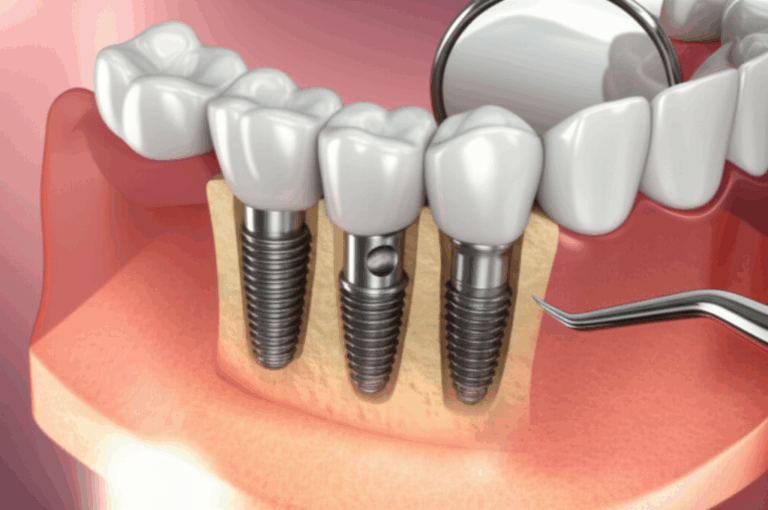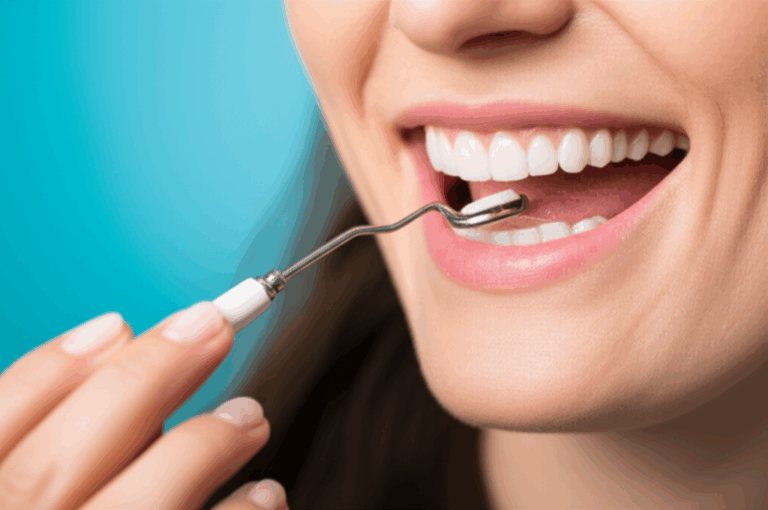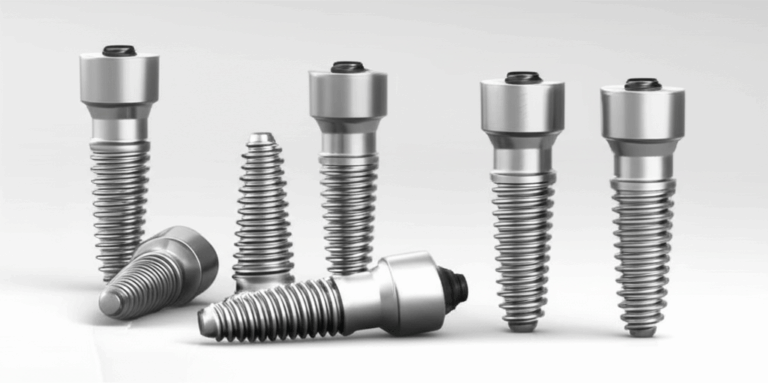
What Happens If My Dental Implant Is Loose? Your Guide to Causes, Risks, and Solutions
Table of Contents
- Introduction: My Experience With a Loose Dental Implant
- Is My Dental Implant Really Loose? Understanding the Sensation
- Differentiating a Loose Implant From a Loose Crown or Abutment
- Common Sensations and What They Might Mean
- Why Do Dental Implants Become Loose? Common Causes
- Loose Implant Component (Crown or Abutment Screw)
- Failure of Osseointegration
- Peri-Implantitis (Infection and Bone Loss Around the Implant)
- Non-Infectious Bone Loss Around the Implant
- Trauma or Excessive Force (Bruxism, Injury)
- Other Contributing Factors
- The Risks of Ignoring a Loose Dental Implant
- What to Do If Your Dental Implant Feels Loose: Immediate Steps
- How a Loose Dental Implant Is Diagnosed and Treated
- The Diagnostic Process
- Treatment Options Based on Cause
- Can a Loose Dental Implant Be Prevented?
- When to Seek Emergency Care for a Loose Implant
- Key Data and Statistics: What the Evidence Shows
- Frequently Asked Questions
- Conclusion: Takeaway From My Journey
Introduction: My Experience With a Loose Dental Implant
If you’ve ever run your tongue across a dental implant and thought, “Wait, is that supposed to move?”, you know how scary it feels. I’ve been through that. Feeling something move that’s supposed to stay put just makes your mind spin. What happened? Is my implant bad? Can this get worse?
Let me show you what I found out—by looking things up, going through it myself, and talking with my dentist—about loose dental implants. I’ll explain what’s going on, what might be causing it, and, most important, what you should do. It doesn’t matter if your dental implant only feels a bit strange or is really loose—you need good info, and I’m here to give it.
Is My Dental Implant Really Loose? Understanding the Sensation
Sometimes, “loose” isn’t easy to figure out. When my implant started to feel weird, I wasn’t sure: Is it the implant? Is the top part coming off? Am I just worrying too much? I kept asking myself.
Differentiating a Loose Implant From a Loose Crown or Abutment
Here’s what my dentist told me:
- Implant Fixture (Post): This is the metal piece put in your jaw. If this is loose, it’s serious.
- Abutment: The small piece that holds the fake tooth on the implant. These can get loose if the screws come loose.
- Dental Crown: This is the part you see that looks like a tooth. It can get knocked loose, crack, or move, which can feel like the whole tooth is wobbly.
Most of the time, when people say, “my implant is loose,” it’s actually just the crown or abutment screw. Still, only a dentist can really tell. It’s important to know the difference, because fixing a loose crown or screw is usually much easier and quicker—sometimes just tightening it.
Common Sensations and What They Might Mean
When my crown felt a bit shaky, I noticed:
- Clicking sounds when I chewed,
- Slight movement if I pushed with my tongue,
- Sometimes a little bit of discomfort,
- Sometimes a dull ache, mostly when chewing something tough.
Other people say it feels like their tooth is “floating” or “spinning.” Even a little bit of movement is not normal for an implant! Even if it doesn’t hurt, if it feels loose, you should call your dentist.
Why Do Dental Implants Become Loose? Common Causes
After my dentist said something wasn’t right, I really wanted to know, “Why is this happening?” Turns out, there’s a few reasons implants might get loose. Here’s what I’ve learned:
Loose Implant Component (Crown or Abutment Screw)
This is the main reason. Something simple, like a crown that lost its glue or a screw that’s not tight, can let it move. With mine, it was a tiny screw that had started loosening. My dentist fixed it in less than an hour.
These things can happen just from daily use, or if the crown wasn’t fitted just right. The upside? It usually doesn’t mean your whole implant is bad, and it’s often an easy fix.
Failure of Osseointegration
Basically, this means the implant never really stuck to the bone like it should have. This usually happens in the first months after getting the implant.
A friend of mine had this because he didn’t have enough solid bone, so the implant never got tight. If your implant feels loose not long after surgery, this could be the reason. They usually have to take it out and maybe try again later, sometimes after fixing up the bone.
Peri-Implantitis (Infection and Bone Loss Around the Implant)
This one worried me the most. Peri-implantitis is kind of like gum disease for implants—a bacterial infection gets under the gums, causing swelling and bone to disappear. With less bone holding it, the implant can start to move.
The problem is, this infection doesn’t always hurt at first. You might see swelling, bleeding gums, or just a bad taste. If you ignore a loose implant and this is the reason, it can get worse fast.
Non-Infectious Bone Loss Around the Implant
Not all bone loss is from infection. Sometimes things like osteoporosis, bite force that’s too strong, or just weak bone from the start can make the bone thin out over time. Grinding your teeth at night (bruxism) also puts a lot of strain on implants.
Trauma or Excessive Force (Bruxism, Injury)
A knock to the face, an accident, or grinding your teeth when sleeping—these all put stress on the bone holding the implant. I once forgot to wear my night guard, woke up with a hurting jaw, and my implant started to move a little. Not worth it!
Other Contributing Factors
- Smoking—bad habit for your gums and healing. Smoker’s implants are more likely to have problems.
- Badly controlled diabetes or other long-lasting health issues—slow down healing and make infections more likely.
- Not cleaning your teeth well—let bacteria build up near your implant.
The Risks of Ignoring a Loose Dental Implant
Let me be clear. Ignoring a loose implant is just asking for big problems. When I first noticed mine was moving, I thought about waiting, hoping it would go away. Learn from me—waiting almost always makes it worse.
Here’s what can happen:
- More bone loss and jaw problems: The more the implant moves, the more bone you can lose. You might lose the implant and the chance to ever put a new one there.
- Infection gets worse: If infection is causing the looseness, it can grow fast, causing pain, swelling, pus, and it might even spread.
- Implant might need to be pulled out: Sometimes, if you wait too long, they can’t fix it and have to take it out. This isn’t fun and can get expensive.
- Nearby teeth get hurt: A moving implant can make you bite wrong and push on other teeth, giving you more problems.
- Pain gets bad: That little wiggle can become a big ache if infection joins in.
What to Do If Your Dental Implant Feels Loose: Immediate Steps
When my implant first felt loose, my first idea was to look things up online. I saw all kinds of home fixes—none of which are good! Here’s what worked for me, and what my dentist said to do:
Do Not Attempt to Fix It Yourself
Seriously, please don’t try to fix it with tools or glue—even if you’re tempted. You might hurt yourself, make the infection worse, or even swallow something that comes loose.
Contact Your Dentist or Oral Surgeon Immediately
Even if it doesn’t hurt, call your dentist if you feel anything weird in your implant. If you have swelling, a big ache, or signs of infection, let them know it’s urgent.
Avoid Chewing on the Affected Side
Biting down puts pressure on loose crowns or implants. Try to eat soft things, chew on the other side, and don’t make it worse before your dentist can help.
Keep the Area Clean (But Gently)
Brush carefully with a soft toothbrush around the implant. Rinse with warm salt water to keep germs down while you wait for your dentist.
How a Loose Dental Implant Is Diagnosed and Treated
So, here’s what happened when I went in and how dentists figure out the problem.
The Diagnostic Process
Treatment Options Based on Cause
How they fix it depends on what’s loose and the reason. Here’s what usually happens:
For Loose Crown or Abutment
If it’s the fake tooth or abutment screw, you got lucky! The dentist might:
- Take off the crown,
- Tighten or swap the screw,
- Clean and stick the crown back.
That’s what happened with me. I got it retightened and was out in less than an hour.
For Peri-Implantitis
If infection and bone loss are to blame, what they do depends on how bad it is:
- Mild cases: Clean around the implant, use tiny tools or lasers, and maybe put medicine directly by the implant.
- Worse cases: Surgery to clean out bad tissue, smooth the bone, and maybe add bone powder to help healing.
For Osseointegration Failure or Bad Bone Loss
If the implant never stuck or a lot of bone is gone, they usually:
- Remove the implant,
- Give it time to heal—sometimes with bone grafts,
- Maybe try a new implant after some months.
I haven’t needed this (thank goodness), but it can take a while from start to finish.
For Trauma or Bruxism
- Adjust your bite or how the crown touches other teeth,
- Make a mouth guard for sleeping,
- Swap any broken parts to help your bite.
Wearing a mouth guard is now part of my daily habits. It was weird at first, but it’s worth it to keep my implant safe.
If you’re interested to know how dental labs make custom and strong implant solutions, you can check out this implant dental laboratory.
Can a Loose Dental Implant Be Prevented?
After all the stress with my loose implant, of course I wanted to know: How do I keep this from ever happening again?
Here’s what helped me:
Choose a Good Dental Professional
The skill of the dentist and their tools matter. Ask how many implants they’ve done and about their results. A trusted crown and bridge lab can really help make sure everything fits and works right.
Be Careful With Daily Cleaning
Brush twice a day using a soft brush. Floss (or use special tools) around and between implants, just like with real teeth. This keeps germs away.
Go to Regular Check-ups and Cleanings
See your dentist two times a year, or more if needed. Cleanings can catch small problems before they turn big.
Deal With Teeth Grinding or Bad Chewing Habits
If you know (or think) you grind your teeth at night, ask your dentist about a special mouth guard. It’s a simple thing that can save you a lot of money and pain.
Stop Smoking and Control Health Problems
Try to quit smoking—it really helps your chances with implants. Also, keep things like diabetes under control. The healthier you are, the better for your teeth.
When to Seek Emergency Care for a Loose Implant
Sometimes it’s hard to know if something is a real “emergency.” Here’s what my dentist told me to look out for:
- Strong, pounding pain that wakes you up,
- Face or gum swelling that’s big,
- Fever (this can mean infection),
- Hard time breathing or swallowing,
- Symptoms getting worse fast.
If any of these happen along with your loose implant, call right away. Don’t wait for it to “just get better”—it probably won’t on its own.
Key Data and Statistics: What the Evidence Shows
I like to see the numbers. Here’s what I found helpful:
| Category | Statistic | What It Means for You |
|---|---|---|
| Overall Implant Success | 95-98% after 10-15 years in healthy people | Implants work for most, but problems do happen |
| Peri-Implantitis (Infection) | 10-20% of implants, up to 56% of people over 5-10 years | Infection is common—so watch out and take care |
| Early Failure Rate | 2-5% (mostly from bad bone healing) | Most failures happen soon after surgery |
| Late Failure Causes | Infection, crown/screw problems, extra force | Ongoing care and habits make a big difference |
| Component Loosening | 5-15% (screw or abutment) | Often fixable if you act fast—don’t wait |
| Smokers’ Risk | 2-3 times higher chance of failure | Another reason to quit |
| Treating Peri-Implantitis | 50-80% fix rate, depending how bad it is | Early care helps!
Frequently Asked Questions
Is a loose dental implant always an emergency?
Not always, but you should get it checked soon. If there’s swelling, pain, or fever, it’s urgent.
Can a loose dental implant be saved?
Sometimes, yes. If it’s just the cap or screw, or if infection is caught soon, it can be fixed. Bad bone loss sometimes means it has to be removed.
How long does it take to fix a loose dental implant?
Simple stuff (like a loose screw) can usually be fixed the same day. Infection or bone problems can take longer and mean more appointments.
What is the chance of fixing a loose dental implant?
If you catch it early, fixing a small problem works really well. Infection or bone loss fixes work about half to eighty percent of the time, depending how bad it is.
For more resources about dental troubles and ways to fix them, visit this guide on dental problems.
Conclusion: Takeaway From My Journey
If you’re still reading, thanks for sticking with me. I know how scary it feels when your implant lets you down. The truth is, most loose implants aren’t the end of the world. With quick action, good habits, and a good team, you’ll probably still have your smile.
My biggest lesson? Don’t ignore the little things. Notice how your teeth feel and don’t wait to ask for help. It can save you a lot of pain, money, and stress.
Have you had a loose implant or worried about one? I hope sharing what happened to me and what I learned helps you make the right choice. You’re not alone—there are lots of dental pros, and labs like this digital dental lab, ready to help you keep your smile healthy for years!








